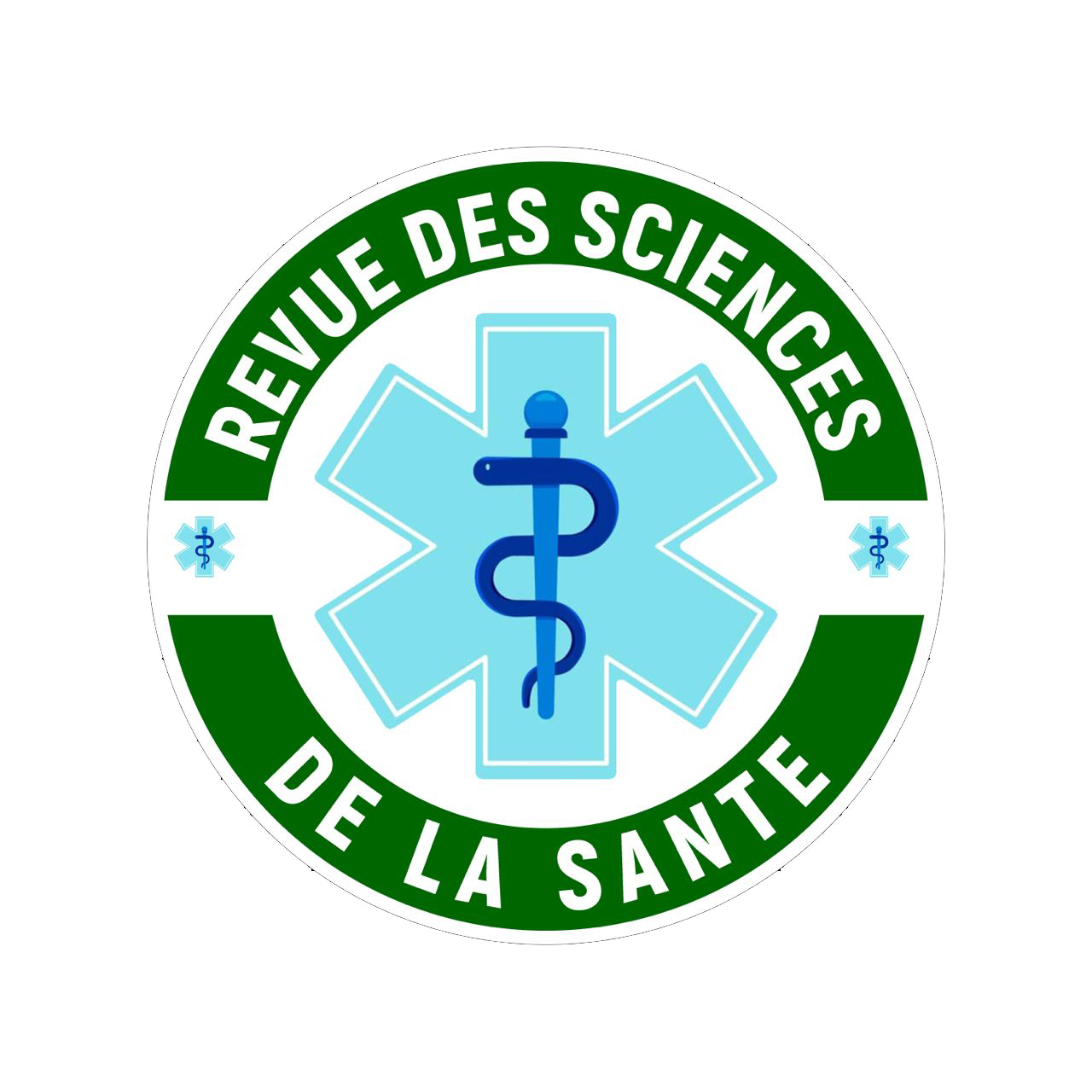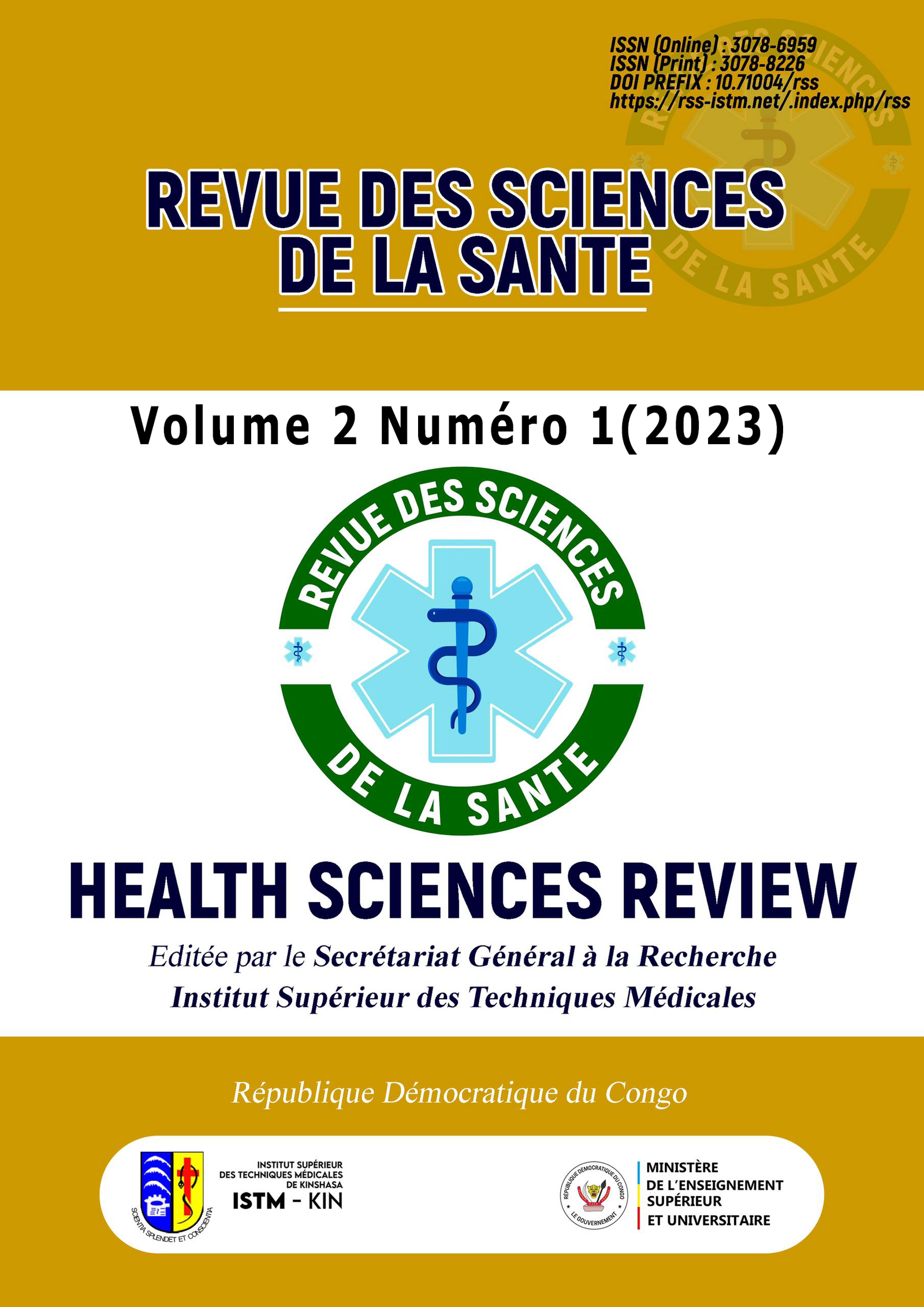Abstract
Anemia in children aged 0 to 5 years was studied in 2014 among children attending the Matete general reference hospital in Kinshasa. It was a question of examining the profile of the subjects of study, the prevalence as well as the types of anemia found in these children. To arrive at the count of red blood cells, the hematocrit and hemoglobin levels were carried out respectively by hematimeter, centrifuge and the method of Sahli. The results found showed that out of a total of 150 children examined, 50 were anemic or 30%. From the age point of view, it is between 0 and 2 years that children are the most affected by anemia. The results obtained indicate that normochromic anemia accounted for 60% and microcytic anemia for 78%. These two types of anemia are a priori involved, respectively, in malaria and iron deficiency.
References
[1] OMS et UNICEF. "Joint statement: Focusing on anaemia, towards an integrated approach for effective anaemia control, OMS. 2004.
[2] Diouf S, Folquet M, Mbofung K., Ndiaye O, Brou K., Dupont C, N’dri D, Vuillero M, Azaïs-Braesco V. Prévalence et déterminants de l’anémie chez le jeune enfant en Afrique francophone – Implication de la carence en fer Prevalence and determinants of anemia in young children in French-speaking Africa. Role of iron deficiency. Archives de Pédiatrie, 2015. Volume 22, Issue 11, p1188-1197.
[3] OMS et UNICEF. Prise en charge intègre de maladies de l’enfant (PCIME), livret de tableaux. 2011.
[4] Scott D, Grosse I, Hani K, Atrash, Djesika D, Amendah, Frédéric B, Piel, Thomas N. "Sickle Cell Disease in Africa." American Journal of Preventive Medecine. 2011; 41(6): p398-405.
[5] Kendra W. Follow-up of three large community-based programs to reduce anaemia among children 24-59 months in Ghana, Malawi and Tanzania, Thèse présentée à la Faculté de Médecine en vue. 2011.
[6] OMS. Système d'information nutritionnelle sur les vitamines et les minéraux. Genève: OMS, 2011; Concentration d'hémoglobine permettant de diagnostiquer l'anémie et d'en évaluer la sévérité (WHO/NMH/NHD/MNM/11.1).
[7] EDS-RDC II 2013-2014. Deuxième enquête démographique et de Sante, Ministère du Plan et Suivi de la Mise en oeuvre de la Révolution de la Modernité. 2014; p176.
[8] Kayembe M, et al. Cartographie de la croissance urbaine de Kinshasa (R.D. Congo) entre 1995 et 2005 par télédétection satellitaire à haute résolution. Revue Belge de Géographie. 2009; p439-456.
[9] Chaparro C.M. Setting the stage for child health and development: prevention of iron deficiency in early infancy J Nutr. 2008; 138 : p2529-2533.
[10] WHO Iron deficiency anemia. Assessment, prevention and control. A guide to programme managers. 2001
[11] Nguefack F et al. Fréquence des anémies sévères chez les enfants âgés de 2 mois à 15 ans au Centre Mère et Enfant de la Fondation Chantal Biya, Yaoundé, Cameroun. 2012; Journal of Clinical Medicine and Research Vol. 2(3) p35-41.
[12] Abissey A et al. Apport de l’hemogramme dans la Classification des anémies. 1991; Médecine d'Afrique Noire : 38 (11).
[13] Karch S, Asidi N, Manzambi ZM, Salaun JJ. La faune Anopheliènne à Kinshasa (Zaïre) et la transmission du paludisme humaine. Bull Soc Path Ex. 1992; 85: p304-309.

This work is licensed under a Creative Commons Attribution-ShareAlike 4.0 International License.

